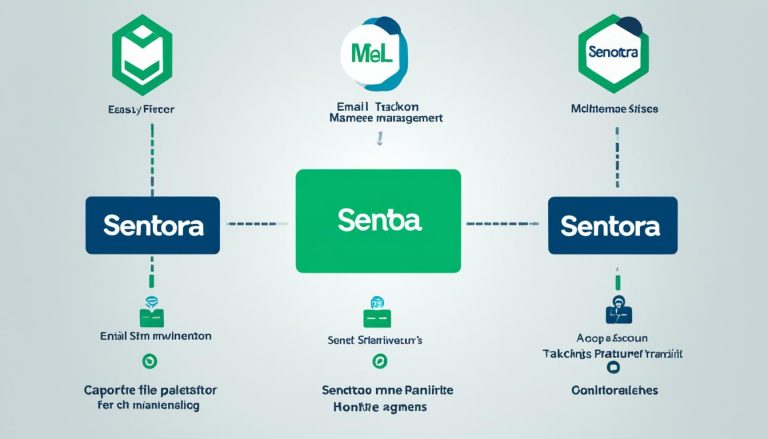Understanding What is PostgreSQL: A Deep Dive
PostgreSQL, often referred to as Postgres, is a powerful and popular open-source relational database management system. It offers a wide range of features and functionalities that make it a preferred choice for many developers and enterprises. With its robust and flexible nature, PostgreSQL allows users to efficiently store, retrieve, and manipulate large sets of structured data.
It supports various data types, including text, numeric, boolean, date and time, and more. Additionally, PostgreSQL offers advanced features such as ACID compliance, transactions, indexing, and query optimization, making it suitable for complex data operations. Whether you are a beginner or an experienced user, PostgreSQL provides comprehensive documentation and tutorials to help you get started and make the most of its capabilities.
Key Takeaways:
- PostgreSQL is a powerful open-source relational database management system.
- It offers a wide range of features and functionalities for efficient data storage and manipulation.
- PostgreSQL supports various data types and advanced features like ACID compliance and transactions.
- Comprehensive documentation and tutorials are available for beginners and experienced users.
- PostgreSQL is a preferred choice for developers and enterprises due to its flexibility and robustness.
Key Features and Benefits of PostgreSQL
PostgreSQL offers several key features and benefits that set it apart from other database management systems. One of its main advantages is its open-source nature, which means it can be freely downloaded, used, and customized. This makes PostgreSQL a cost-effective option for businesses of all sizes.
Additionally, PostgreSQL is known for its reliability and stability, with a strong track record of performance and data integrity. It supports multiple database models, including relational, object-oriented, and document-based, giving users the flexibility to work with different data structures.
PostgreSQL also provides excellent scalability, allowing for the efficient management of large datasets. It can handle high volumes of concurrent connections and transactions, making it suitable for both small-scale applications and enterprise-level systems.
Moreover, PostgreSQL’s extensive documentation and active community ensure that users have access to comprehensive support and resources. Whether you need guidance with installation, configuration, or troubleshooting, the PostgreSQL documentation offers detailed explanations and tutorials to assist you every step of the way.
| Benefits of PostgreSQL | Description |
|---|---|
| Open-Source | Freely available for download and customization, making it a cost-effective option for businesses. |
| Reliability and Stability | Proven performance and data integrity provide a robust foundation for critical applications. |
| Flexible Data Models | Supports relational, object-oriented, and document-based database models, allowing for versatile data structures. |
| Scalability | Efficiently handles large datasets and concurrent connections, enabling seamless growth. |
| Comprehensive Documentation | Extensive resources and tutorials ensure users have access to the necessary information for installation and maintenance. |
Overall, PostgreSQL combines powerful features, reliability, and scalability, making it a top choice for many developers and businesses. Its open-source nature and broad community support contribute to its popularity and accessibility. Whether you’re just starting with PostgreSQL or have experience with other database systems, its benefits and extensive documentation make it a compelling option for your data management needs.
PostgreSQL vs MySQL: A Comparison
When choosing a database management system, it’s essential to consider the differences between PostgreSQL and MySQL. While both are popular choices, they have distinct features and use cases.
PostgreSQL offers more advanced features and functionalities, such as support for complex data types, transactions, and advanced indexing options. It is often preferred for applications that require strong data integrity and high-level data manipulation capabilities.
On the other hand, MySQL is known for its simplicity and ease of use, making it suitable for smaller projects or applications with less stringent data requirements. MySQL is also widely used in web development due to its compatibility with popular CMS platforms like WordPress.
Ultimately, the choice between PostgreSQL and MySQL depends on the specific needs of your project, scalability requirements, and familiarity with the respective databases.
To better understand the differences between PostgreSQL and MySQL, let’s take a look at a comparison table:
| PostgreSQL | MySQL |
|---|---|
| Advanced features and functionalities | Simplicity and ease of use |
| Support for complex data types | Suitable for smaller projects |
| Transactions and advanced indexing options | Less stringent data requirements |
| Strong data integrity and high-level data manipulation capabilities | Widely used in web development |
As you can see, there are clear differences between PostgreSQL and MySQL. It’s important to evaluate your project’s requirements and consider factors such as data complexity, scalability, and ease of use when making a decision.
PostgreSQL Query Optimization and Performance
When it comes to maximizing the performance of your PostgreSQL database, query optimization plays a crucial role. PostgreSQL offers a range of techniques and tools that can help you optimize query execution and improve overall performance. By employing these strategies, you can enhance the efficiency of your database and ensure smooth data operations.
1. Indexing
Indexing is one of the key methods for optimizing query performance in PostgreSQL. It involves creating indexes on commonly used columns to expedite data retrieval. By indexing the relevant columns, you can significantly reduce the time it takes to execute queries that involve those columns. This enables faster search and retrieval of data, enhancing the overall efficiency of your database.
2. Query Rewriting
In some cases, modifying your queries can lead to significant performance improvements. PostgreSQL allows you to rewrite queries by using alternative approaches or restructuring them to take advantage of specific optimizations. By analyzing and rewriting queries, you can eliminate redundant or inefficient operations, resulting in faster and more efficient execution.
3. Analyzing and Tuning Query Plans
The EXPLAIN command in PostgreSQL provides insights into how queries are executed and helps you analyze query plans. By examining the query plans, you can identify potential performance bottlenecks or inefficient operations. This information allows you to fine-tune your query plans and optimize them for improved performance. Additionally, PostgreSQL’s auto-tuning capabilities can automatically adjust query plans based on runtime statistics, further enhancing query performance.
4. Optimizing Schema Design
The design of your database schema can have a significant impact on query performance. By optimizing your schema design, such as appropriately defining relationships, data types, and constraints, you can improve query execution time. A well-designed schema can minimize the need for complex joins or redundant data operations, leading to faster and more efficient queries.
Proper PostgreSQL query optimization requires a comprehensive understanding of your data and the specific queries being executed. Regular monitoring of runtime statistics and query performance is essential to identify areas for improvement. By applying index optimization, query rewriting, query plan analysis, and efficient schema design, you can achieve optimal performance for your PostgreSQL database.
| Techniques | Benefits |
|---|---|
| Indexing | – Faster data retrieval – Improved query execution speed |
| Query Rewriting | – Elimination of redundant operations – More efficient query execution |
| Analyzing and Tuning Query Plans | – Identification of performance bottlenecks – Fine-tuning of query plans – Automatic plan adjustments based on statistics |
| Optimizing Schema Design | – Minimization of joins and redundant operations – Faster and more efficient queries |

By implementing these optimization techniques and continuously monitoring the performance of your queries, you can unlock the full potential of your PostgreSQL database and ensure optimal efficiency in handling your data.
Conclusion
In conclusion, PostgreSQL is a robust and versatile open-source database management system that offers a wide range of features and benefits. Its reputation for reliability, stability, and data integrity has made it a trusted choice for businesses and developers alike.
Whether you’re working on a small project or a large-scale enterprise application, PostgreSQL provides the necessary tools and support to meet your data management needs. Through its comprehensive documentation and tutorials, you can easily learn and master its capabilities.
To maximize the efficiency of your PostgreSQL database, it’s important to understand its features, optimize query performance, and regularly maintain your database. By leveraging its advanced query optimization techniques and monitoring query performance, you can ensure a smooth and seamless experience with your data.
Continuously explore the rich resources and community support available for PostgreSQL to further enhance your skills and make the most out of this powerful database system. With PostgreSQL, you have the foundation to efficiently manage and manipulate your data, empowering you to drive success in your projects and achieve your goals.
FAQ
What is PostgreSQL?
PostgreSQL, often referred to as Postgres, is a powerful and popular open-source relational database management system.
What are the key features of PostgreSQL?
PostgreSQL offers advanced features such as ACID compliance, transactions, indexing, and query optimization.
What are the benefits of using PostgreSQL?
PostgreSQL is cost-effective, reliable, stable, and supports multiple database models.
How do I install PostgreSQL?
You can install PostgreSQL by following the installation instructions provided in the documentation.
Where can I find PostgreSQL documentation?
PostgreSQL provides comprehensive documentation on their official website, which covers installation, configuration, and usage.
What is the difference between PostgreSQL and MySQL?
PostgreSQL offers more advanced features and functionalities, while MySQL focuses on simplicity and ease of use.
How can I optimize the performance of my PostgreSQL queries?
You can optimize query performance in PostgreSQL by using techniques such as indexing, query rewriting, and analyzing query plans.
- About the Author
- Latest Posts
Mark is a senior content editor at Text-Center.com and has more than 20 years of experience with linux and windows operating systems. He also writes for Biteno.com






